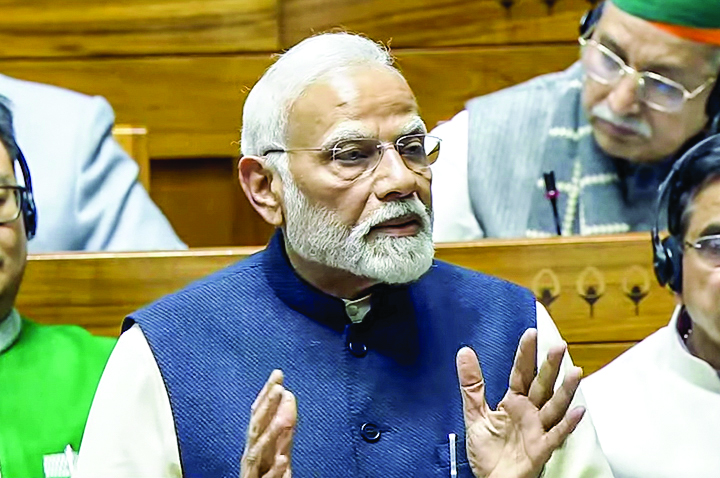New Delhi: The direct impact of good governance was evident in the 2024 Lok Sabha elections, with analysis revealing that more women voted this time compared to the previous polls, owing to the positive influence of central schemes on their lives.
The May 2024 elections, apart from bringing back the BJP led National Democratic Alliance back into power for the third time, marked a significant shift in increased women voter engagement. This was driven largely by targeted government initiatives, particularly those implemented by the central government since Prime Minister Narendra Modi assumed office in May 2014, the long term impact of which are coming to fore.
As per analysis, the 2024 poll saw over 18 million incremental women voters compared to the 2019 elections, reflecting a direct outcome of the concerted focus of Modi government on women’s empowerment through welfare programs.
This analysis is based on the report released on 9 January by the State Bank of India (SBI) Research Team, headed by Dr. Soumya Kanti Ghosh, Group Chief Economic Adviser.
One of the flagship programs, the Pradhan Mantri Awas Yojana (PMAY), as per the research, made a huge transformative effect, with 74% of houses sanctioned under the scheme being owned by women, either solely or jointly.
This initiative contributed to approximately 2 million incremental women voters in the 2024 elections, underscoring the political and social resonance of asset ownership, the report found.
Similarly, the Mudra Yojana, aimed at promoting entrepreneurship among small and micro-business owners, had a profound impact on female employment. This scheme alone accounted for approximately 3.6 million incremental women voters. By fostering financial independence among women, it created a direct connection between economic empowerment and electoral participation.
The Swachh Bharat Mission, another central scheme, revolutionized sanitation infrastructure, significantly benefiting women by improving dignity and safety. This scheme led to an addition of approximately 2.1 million women voters,
Similarly, central initiatives focusing on electricity access and clean drinking water—while less statistically significant—enhanced the quality of life for millions and contributed to voter turnout in meaningful, albeit smaller, ways.
Quantitative analysis in the report revealed that states benefiting from at least one women-centric scheme since 2019 experienced an average increase of 780,000 additional women voters per state, totaling 1.5 crore (15 million). In comparison, non-beneficiary states reported a significantly lower increase of just 250,000 per state, or 3 million total.
Additionally, foundational factors like literacy and employment, supported indirectly by central initiatives, contributed substantially to the turnout.
Every 1% increase in literacy resulted in a 25% rise in female voter turnout, adding 4.5 million new voters.
State governments also contributed significantly with localized welfare programs that directly impacted women voters. Notable examples include Madhya Pradesh’s Ladli Behna Yojana, which boosted voter turnout by 2.83 million women, and Karnataka’s Gruha Lakshmi Scheme, responsible for 1.37 million additional women voters.
Maharashtra’s Majhi Ladki Bahin Yojana alone resulted in 5.26 million new women voters, exemplifying the scale of impact at the state level.
Other programs included Tamil Nadu’s Magalir Urimai Scheme (1.56 million), West Bengal’s Lakshmi Bhandar Scheme (2.91 million), Odisha’s Subhadra Yojana Kalighar (910,000), and Jharkhand’s Mukhya Mantri Maiya Samman Yojana (1.7 million). These state-run programs primarily focused on financial support and empowerment, amplifying their socio-political and electoral significance.

